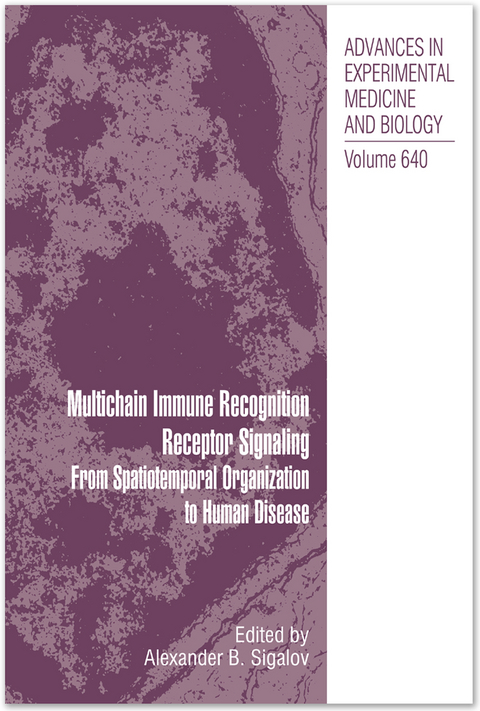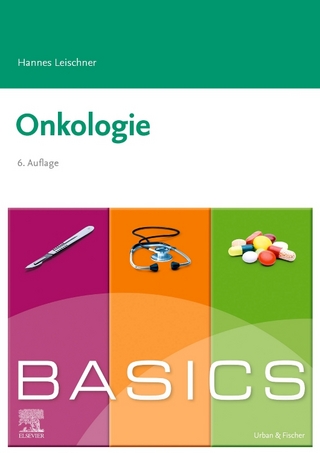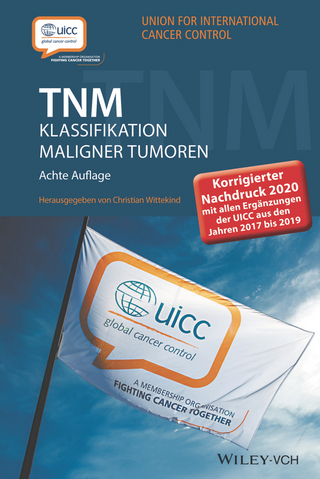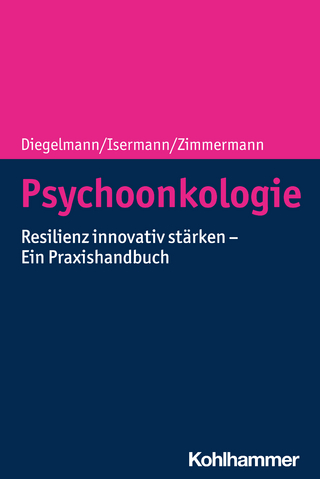
Multichain Immune Recognition Receptor Signaling
Springer-Verlag New York Inc.
978-1-4419-1887-1 (ISBN)
Immunological recognition is a central feature of the adaptive immunity of vertebrates. With the exception of agnathans, which developed an entirely distinct set of immunologically-specific molecules, all vertebrates use a recognition system based on what Achsah Keegan and I suggested in 1992 be termed multichain immune recognition receptors (MIRRs). MIRRs consist of ligand-binding molecules that are immunoglobulin supergene family members associated with signal transducers and enhancers in such a way as both insure precise ligand recognition, discrimination and ampHfication of the signal. Two of the prototypic sets of MIRRs, the T-cell and B-cell receptors, are among the most remarkable recognition molecules known. These are extraordinarily diverse molecules in which the range of ligands that can be potentially recognized prob- ably exceeds the actual numbers of lymphocytes in the body. The discovery of the genetic basis of assembling these receptors and understanding how they bind to their cognate antigens are among the most stunning of scientific achievements.
Yet these immensely specific binding chains (the heavy/light chain pair for immunoglobulin and the a/p chain pair for most T cells), when expressed as membrane molecules, have no obvious mechanism of signaling. For example, the |iH chain cytosolic do- main consists of three amino acids (lysine-valine-lysine) and the L chain is not even embedded in the membrane. Furthermore, there is no known direct mechanism to propagate information from the binding domain of the B-cell or T-cell receptors to the membrane-proximal domains of the same chains.
ALEXANDER SIGALOV, PhD, is a Research Assistant Professor in the Department of Pathology at the University of Massachusetts Medical School in Worcester, Massachusetts, USA. His main research interests include protein intrinsic disorder and oligomericity in the context of transmembrane signal transduction, the molecular mechanisms underlying immune receptor-mediated signaling and ways to control these processes and thus to modulate the immune response, as well as the development and applications of novel targets and strategies for innovative immune therapy. He discovered and investigated a very unusual and unique biophysical phenomenon, the homooligomerization of intrinsically disordered proteins, thus providing the first evidence for the existence of specific interactions between unfolded protein molecules. In the field of immunology, he unraveled a long-standing mystery of transmembrane signaling and immune cell activation triggered by multichain immune recognition receptors. Later, he developed a novel concept of platelet inhibition and invented a novel class of platelet inhibitors. In the field of immune therapy, he proposed new therapeutic strategies for a variety of malignancies and immune disorders, including immunodeficiencies, inflammatory and autoimmune diseases, allergy and HIV. He is a member of the American Association for the Advancement of Science and the Biophysical Society, USA. Alexander Sigalov received his academic degrees (MSc in Chemistry and a PhD in Organic Chemistry) from Moscow State University, Russia.
MIRRs: Structure and Physiological Function.- T-Cell Receptor.- B-Cell Receptor.- Fc Receptors.- Natural Killer Cell Receptors.- Platelet Glycoprotein VI.- MIRR Signaling: Possible Mechanisms and the Techniques to Study and Visualize.- Clustering Models.- Segregation Models.- Kinetic Proofreading Model.- Serial Triggering Model.- Conformational Model.- Permissive Geometry Model.- Signaling Chain Homooligomerization (SCHOOL) Model.- Visualization of Cell-Cell Interaction Contacts-Synapses and Kinapses.- Visualization of Protein Interactions in Living Cells.- MIRR Signaling and Therapy of Immune Disorders.- Immunogenicity in Peptide-Immunotherapy: From Self/Nonself to Similar/Dissimilar Sequences.- Therapeutic Application of Transmembrane T and Natural Killer Cell Receptor Peptides.- Fc Receptor Targeting in the Treatment of Allergy, Autoimmune Diseases and Cancer.- Therapeutic Blockade of T- Cell Antigen Receptor Signal Transduction and Costimulation in Autoimmune Disease.- MHC and MHC-Like Molecules: Structural Perspectives on the Design of Molecular Vaccines.- SCHOOL Model and New Targeting Strategies.- Immune Receptor Signaling, Aging and Autoimmunity.- Viral Pathogenesis, Modulation of Immune Receptor Signaling and Treatment.
| Reihe/Serie | Advances in Experimental Medicine and Biology ; 640 |
|---|---|
| Zusatzinfo | 3 Illustrations, color; 67 Illustrations, black and white; XXVII, 357 p. 70 illus., 3 illus. in color. |
| Verlagsort | New York, NY |
| Sprache | englisch |
| Maße | 155 x 235 mm |
| Themenwelt | Medizin / Pharmazie ► Medizinische Fachgebiete ► Onkologie |
| Medizin / Pharmazie ► Studium | |
| Naturwissenschaften ► Biologie ► Biochemie | |
| ISBN-10 | 1-4419-1887-6 / 1441918876 |
| ISBN-13 | 978-1-4419-1887-1 / 9781441918871 |
| Zustand | Neuware |
| Haben Sie eine Frage zum Produkt? |
aus dem Bereich


